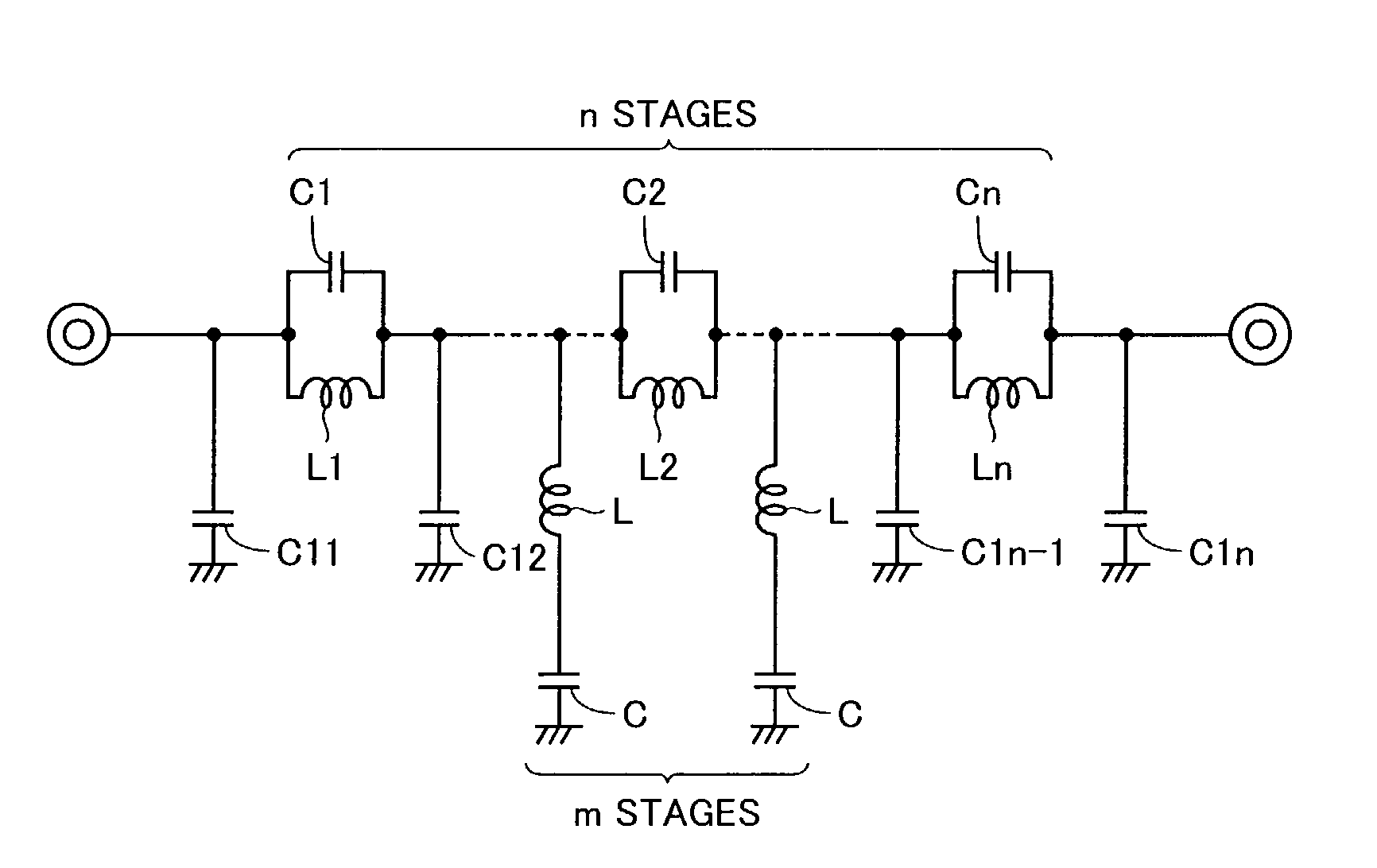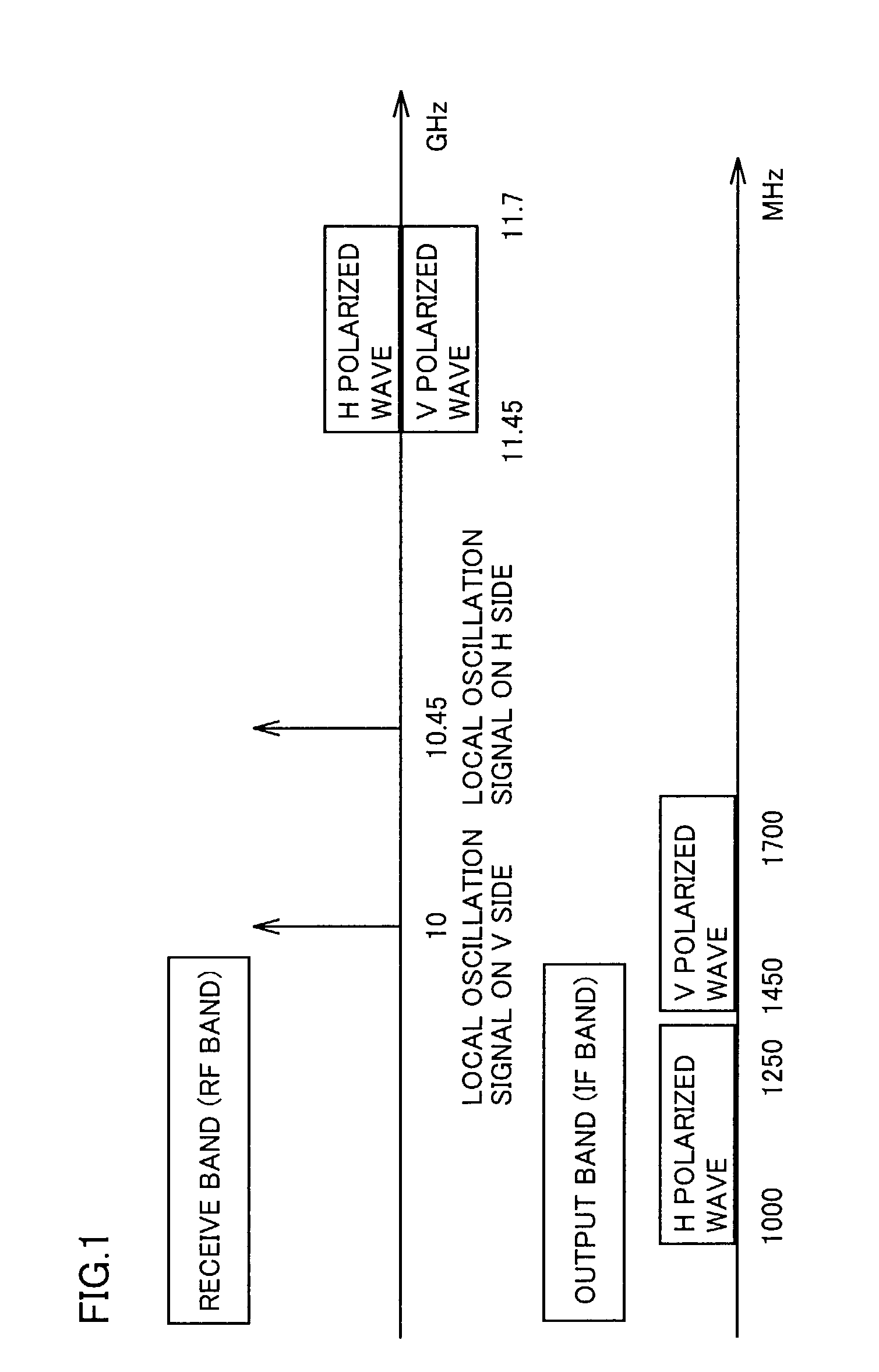Low noise block downconverter converting received signal to intermediate frequency signal
a low noise block and downconverter technology, applied in the direction of waveguide devices, electrical equipment, resonances, etc., can solve the problem of increasing the cost of chip components
- Summary
- Abstract
- Description
- Claims
- Application Information
AI Technical Summary
Benefits of technology
Problems solved by technology
Method used
Image
Examples
Embodiment Construction
[0026]FIG. 1 shows by way of example the transmission frequency bands of a band stack LNB to which the present invention is applied. In the band stack LNB shown in FIG. 9, the signal of 11.45-11.70 GHz arriving from the satellite has the H polarized wave and the V polarized wave, which are mixed with local oscillation signals of 10.45 GHz and 10 GHz, respectively, by MIX. The H polarized wave and the V polarized wave are thus converted to 1000-1250 MHz and 1450-1700 MHz, respectively.
[0027]To transmit these signals in one cable, as described above, the interference components are removed by HPF and LPF, respectively, before mixing thereof. LPF in this case is inserted into a signal line on the H polarized wave side. The LPF is required to realize very steep attenuation, since the difference between the pass band and the reject band is only 200 MHz.
[0028]FIG. 2 shows an LPF used in an embodiment of the present invention, and FIG. 3 shows a parallel resonant trap circuit as a componen...
PUM
 Login to View More
Login to View More Abstract
Description
Claims
Application Information
 Login to View More
Login to View More - R&D
- Intellectual Property
- Life Sciences
- Materials
- Tech Scout
- Unparalleled Data Quality
- Higher Quality Content
- 60% Fewer Hallucinations
Browse by: Latest US Patents, China's latest patents, Technical Efficacy Thesaurus, Application Domain, Technology Topic, Popular Technical Reports.
© 2025 PatSnap. All rights reserved.Legal|Privacy policy|Modern Slavery Act Transparency Statement|Sitemap|About US| Contact US: help@patsnap.com



